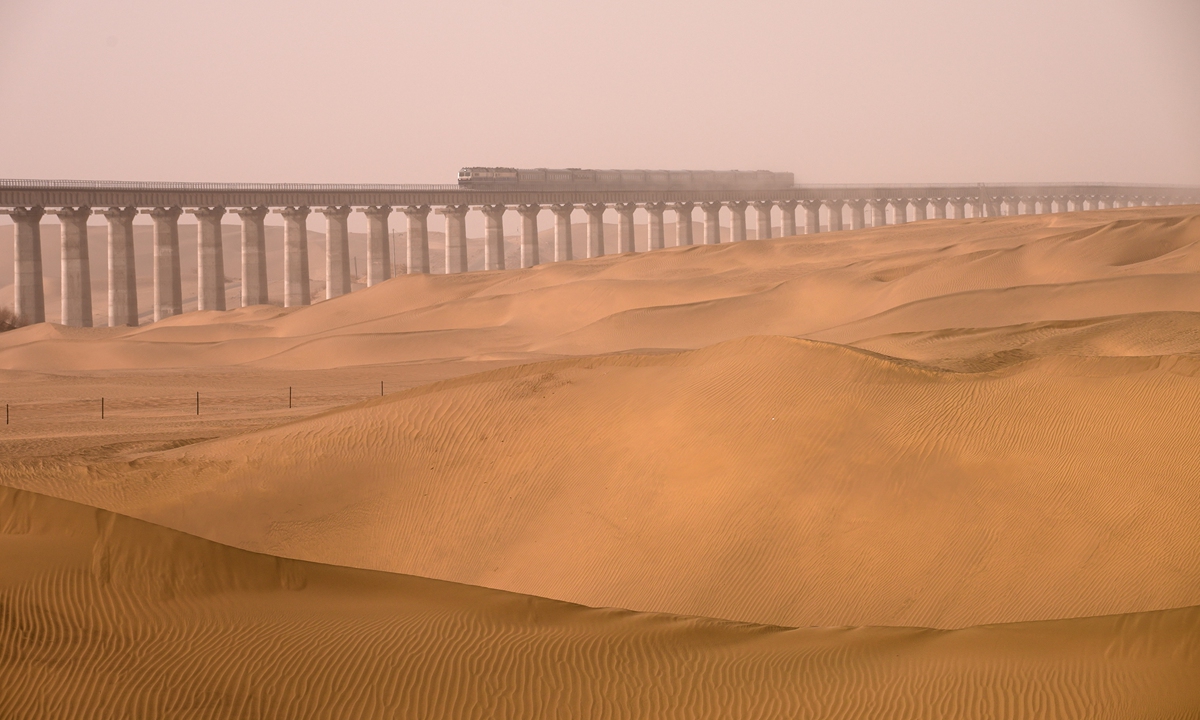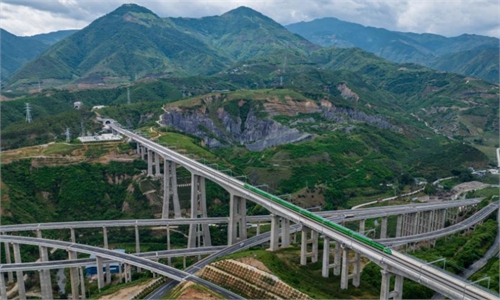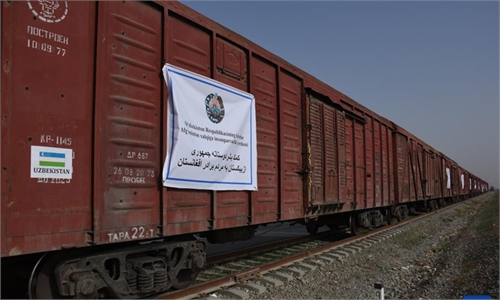China to complete world’s first railway loop around a desert in Xinjiang
Nation completes world’s first railway loop around a desert in Xinjiang

A train moves along the 825-kilometer Hotan-Ruoqiang railway in Northwest China's Xinjiang Uygur Autonomous Region in a test run. Photo: Courtesy of China State Railway Group
China will complete the world's first railway loop around a desert, at 2,712 kilometers and around the vast Taklimakan Desert, when a new 825-kilometer section opens on Thursday in Northwest China's Xinjiang Uygur Autonomous Region, state-owned railway operator China State Railway Group announced on Wednesday.
The Hotan-Ruoqiang railway, which connects Hotan city in southwestern Xinjiang and Ruoqiang county in the southeast, with a journey taking just under 11 and a half hours, has a designed speed of 120 kilometers per hour and 22 stations. The line can be electrified in the future.
The Taklimakan Desert, with a size slightly smaller than Germany, is the world's second-largest shifting sand desert. The Hotan-Ruoqiang railway has 534 kilometers, or 65 percent of its total length, facing the threats of wind and sand, and engineers have battled with these problems since construction began in December 2018.
Five bridges with a total length of 49.7 kilometers were built with trains running on top of these bridges, while sand moves below. The builders created 50 million square meters of grass grids and planted 13 million sand-loving plants such as sea buckthorn to protect the railway.
Together with three existing railways that trim the desert, the operation of the Hotan-Ruoqiang railway will make the world's first railway loop around a desert a reality. The new line will further boost railway connections in the western border areas and facilitate the flow of people and goods, and the development of regions along their routes, with the effect of boosting ethnic unity, bolstering national defense and promoting rural revitalization, the company said.
Sun Zhang, a mass transit expert and professor at Shanghai Tongji University, told the Global Times on Wednesday that the loop railway's lift to regional economic development won't be measured by addition but by multiplication, and the railway is set to greatly boost the economy of southern Xinjiang.
The relatively low speed of the railway means it can carry both passengers and cargo, which will be a boon for the resource-rich region, Sun said.
With the construction of the China-Kyrgyzstan-Uzbekistan (CKU) railway seeing positive signs of getting started after years of delay, the loop railway connecting all parts of southern Xinjiang will help the circulation of goods both domestically and internationally. Kashi, a hub, could become a connecting point of international and domestic circulation, Sun predicted.
The CKU railway would potentially be the shortest route to transport goods from China to Europe and the Middle East, cutting the journey by 900 kilometers and saving seven to eight days of travel time.
As of the end of 2021, the total operating length of railways across China exceeded 150,000 kilometers, including more than 40,000 kilometers of high-speed railways.




